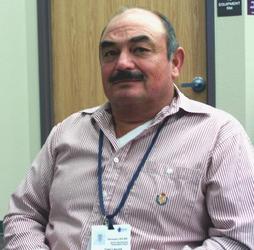
The wheels on MUSD buses are going round and round—totaling 882,141 miles plus special trip mileage to date.
Transportation Director Fred Laguna was at the governing board meeting Wednesday evening to provide an update on his department.
According to Laguna, the MUSD bus fleet is running 148 regular routes and 255 special needs door-to-door routes. They do this with 17 regular buses, 11 special needs buses, eight vans and three trip buses. Seven buses are out of service, due to damage or needing engine rebuilds. Two of those seven are off inventory, neither licensed nor insured, and have been for a year and a half.
Board president Geoff Goddard asked, “Are the only options to rebuild them or scrap them altogether?”
Laguna acknowledged that rebuilding the engines would give his department two spare buses. “We have no spares at this time,” he said. “We use our trip buses if they’re not on trips.”
However, the drawback to rebuilding the engines of the two buses would be cost, $15,000-$19,000 each.
Although the transportation department has been working to reduce the number of routes driven, the number of riders per bus route is recommended by the Arizona Department of Transportation. It recommends 52-56 high school or middle school students per bus and 56-66 elementary students per bus. Numbers are based on the physical size of students. “We have to be real careful on each route about the rider capacity,” explained Laguna.
If a bus is over capacity as determined by the driver, another bus is sent out, usually within 15 minutes. “We use two-way radios to communicate and take care of the situation,” said Laguna.
Special needs capacities differ by vehicle, often depending on the number of wheelchairs the vehicle can accommodate. The district has taken over the transportation of special needs students to facilities in the Valley, routes that were previously covered by private contractors.
Dr. Kymberly Marshall, who heads Exceptional Student Services, told the board, “I think we’re going to see increased numbers as far as transportation needs go.” She and Laguna will be meeting next week to determine whether IEPs will permit some special needs students to be transported on regular buses. “There has to be a need tied to special needs busing,” said Marshall.
Laguna outlined for board members the department’s emphasis on improvements and maintaining safety. There are 25 regular route drivers, 11 special needs drivers, three substitute and three office drivers, as well as one mechanic driver in the department, with a need for an additional five substitute drivers and five substitute bus monitors.
Bus simulator training was done last week to practice backing, driving and railroad crossing procedures. The department institutes refresher classroom training, first-aid and CPR training for both drivers and bus monitors, as well as physical performance testing to be able to lift 40 pounds and drag 150 pounds of weight. Laguna will also soon be bringing in transportation directors from neighboring districts to do a peer review of the MUSD department.
Versa Trans routing software, which was purchased by the district last fall, should be in place for the next school year. Goddard inquired about what was taking so long with the implementation of this software.
According to director of business services Aron Rausch, the GPS maps were received last month and are loaded. Student address information has been forwarded to Versa Trans and may take up to 90 days to load.
Thanking Laguna for his detailed report, Goddard noted, “We’re trying to raise the standards across the board; we’re going to get there.”
Photo by Joyce Hollis

![Who’s the Best Mom InMaricopa? Nominate now! Marlene Marshall, Christina Olivares, and Meghan Bremer. [Bryan Mordt]](https://www.inmaricopa.com/wp-content/uploads/2023/05/BCM_8465-218x150.jpg)



![Maricopa sheds tears amid Maui wildfires that killed dozens For Maricopa resident Janelle Gomez, the sorrow mirrors the loss of a family member. [Brian Petersheim]](https://www.inmaricopa.com/wp-content/uploads/2023/08/Gomez-218x150.jpg)
![Embracing Freedom: Celebrating the Fourth of July Councilmember Vincent Manfredi at Great American 4th 2021 [Victor Moreno]](https://www.inmaricopa.com/wp-content/uploads/2023/07/2021-Great-American-4th-e1688414543522-218x150.jpg)





![Alleged car thief released without charges Phoenix police stop a stolen vehicle on April 20, 2024. [Facebook]](https://www.inmaricopa.com/wp-content/uploads/2024/04/IMG_5040-218x150.jpg)




![MHS G.O.A.T. a ‘rookie sleeper’ in NFL draft Arizona Wildcats wide receiver Jacob Cowing speaks to the press after a practice Aug. 11, 2023. [Bryan Mordt]](https://www.inmaricopa.com/wp-content/uploads/2024/04/cowing-overlay-3-100x70.png)